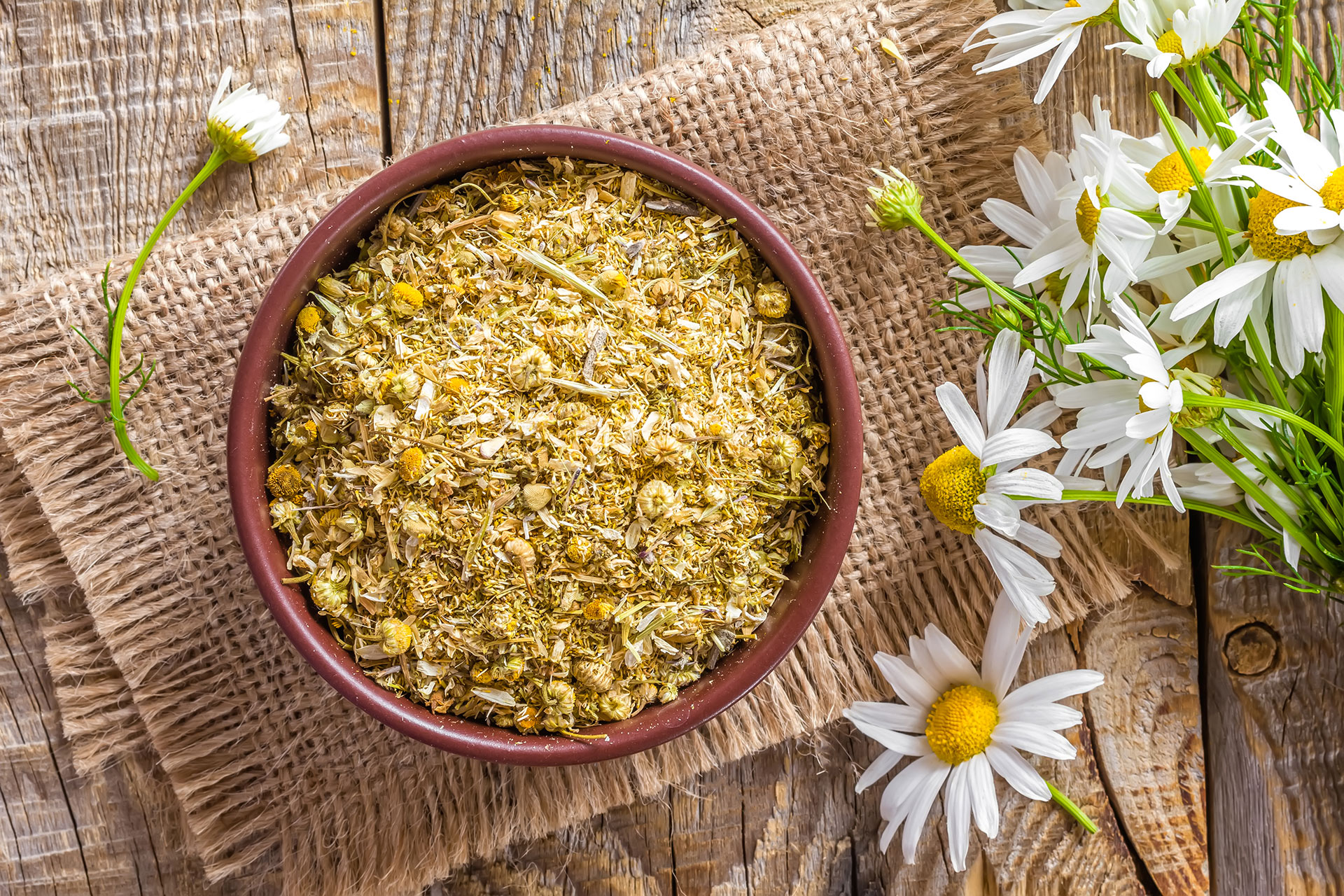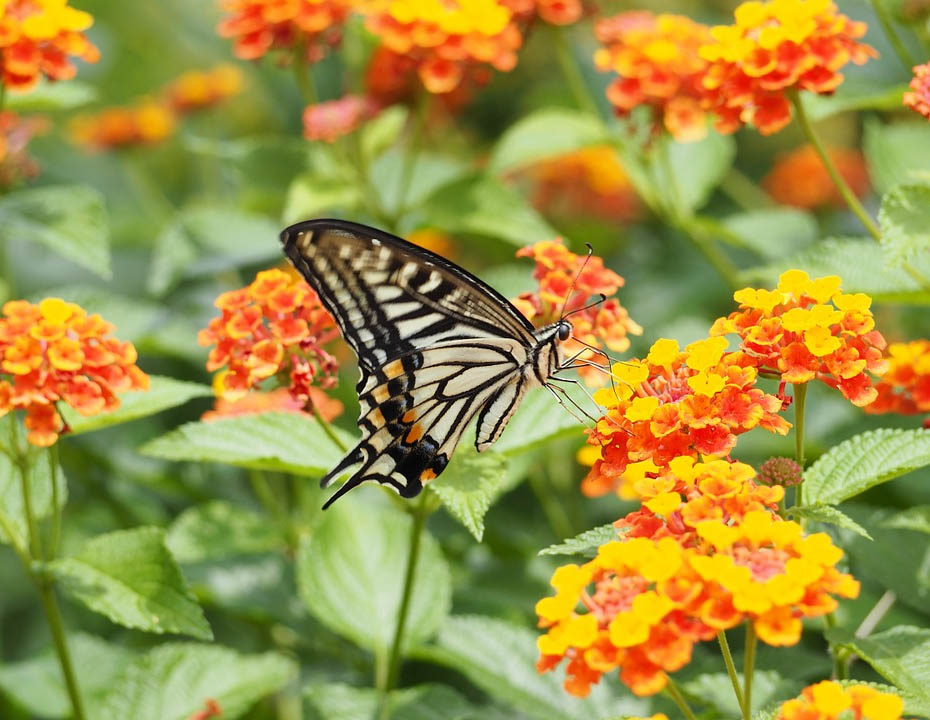by Kenan White | Jan 13, 2022 | Basics, Books & Design, Flowers, Gardening, Herbs, Inspiration, Miscellaneous, Wildlife |
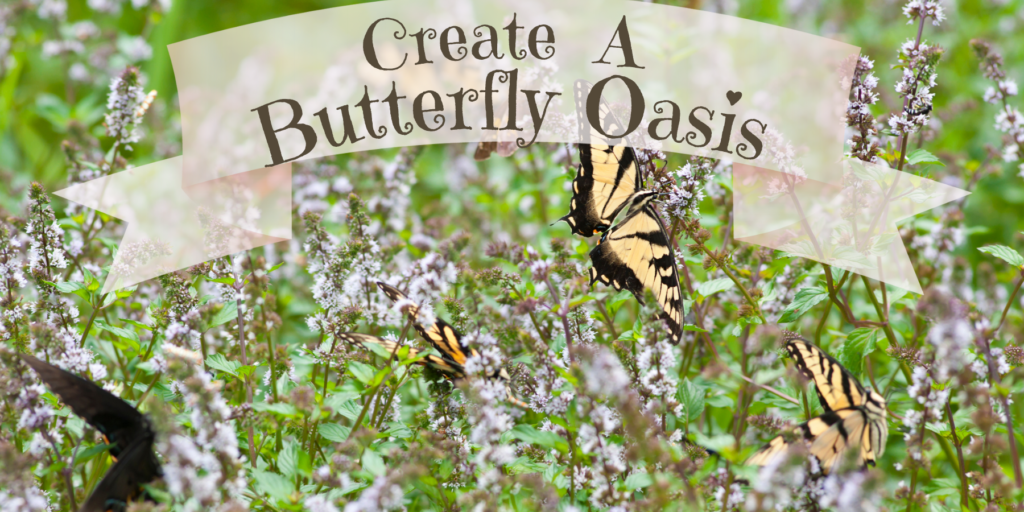
Butterfly gardening can be a wonderful way to experience wildlife in your garden, encourage pollination, and it takes very little maintenance, giving you more time to enjoy the beauty of watching butterflies flock to your plants. Many people who have maintained a butterfly garden for such a long time actually enjoy having visitors to come and look at their creation. This is also a great way to give back to your local ecosystem, as many natural habitats for butterflies and other pollinators have been destroyed by urban development and human interference. We always let about half of our test garden go wild in the summer, in addition to the many flowering shrubs and trees throughout the yard, to give butterflies a safe place to feed and lay their eggs. This is common practice, and we let this happen until the flowering shrubs and trees start to become an issue.
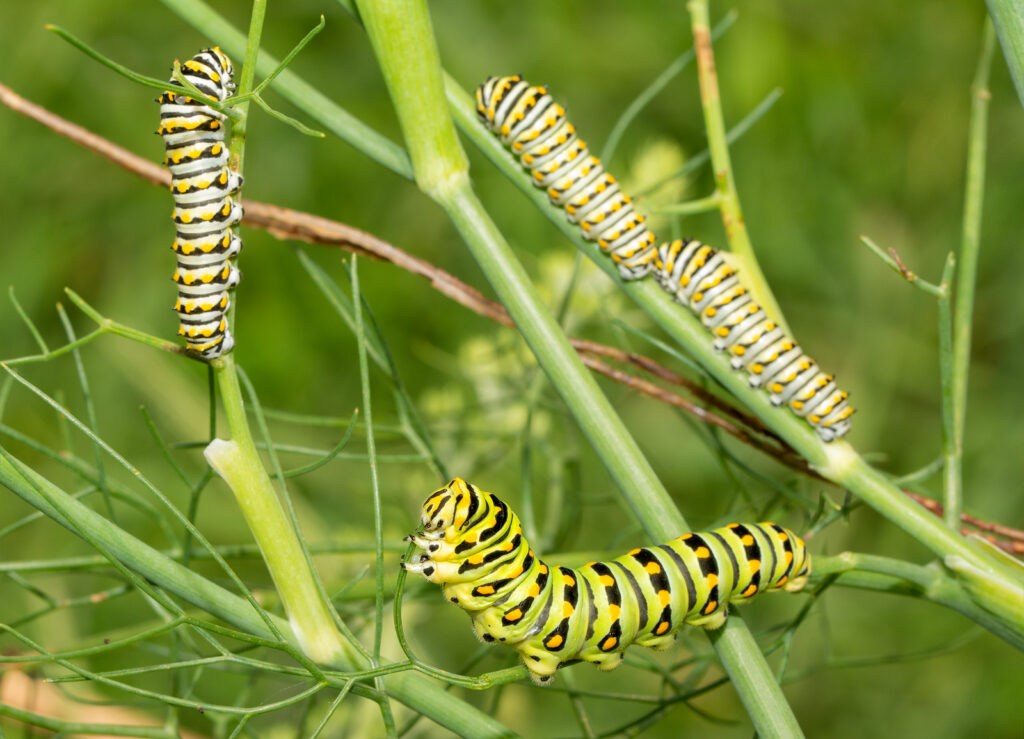
Here’s a wonderful photo showing a Fennel plant hosting Eastern Black Swallowtail butterfly caterpillars
In planning your butterfly garden, make sure to plant plenty of host plants and feeder plants. Host plants are specific herbs, flowers and other plants, that mature butterflies lay their eggs on because they create a safe haven for their young who will also feed on these plants once they become caterpillars. Be aware that these plants will be the sole food source for caterpillars, so it will be pretty heavily snacked upon. Because these may look rather ragged by the time the caterpillars are done munching on them, you may want to add these to the back of your garden, but still close to feeder plants so that the caterpillars are able to find them easily in their next stage of life. Some common host plants include Fennel, Italian Flat Leaf Parsley, Dill, Broccoli, Sunflowers, and Butterfly Flowers (also known as Milkweed).
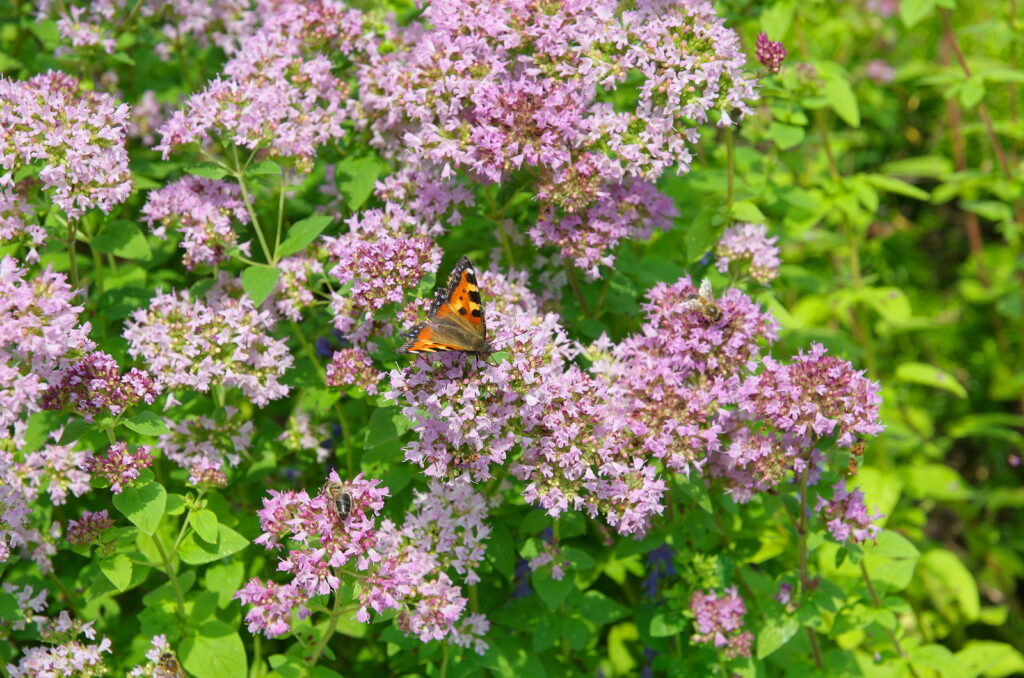
Butterfly on the flowers of oregano (lat. Origanum vulgar)
Feeder plants are nectar rich plants that adult butterflies will feed on throughout the season. These will also attract other helpful pollinators to your garden like honeybees and hummingbirds! Feeder plants tend to be fragrant and brightly colored, and you may be surprised to find that you already have many in your garden already. Some common varieties from our garden include Lantanas, Buddleias (also known as “Butterfly Bushes”), Joe Pye Weed, Bee Balm (Bergamot), Garlic Chives, and Oregano.
- Remember to plant your perennial butterfly plants toward the back of your garden and your annuals toward the front, for easy seasonal replacing.
- Don’t forget to incorporate herbs into your butterfly garden! Many herbs are perennial and will provide you with a safe haven for caterpillars and beautiful blooms when they flower. You can also use them in many other ways!
- Choose an area that is protected by the wind, as butterflies are delicate and don’t want to fight strong breezes to feed.
- Provide a water source, such as a birdbath or a shallow bucket filled with water with sand in the bottom.
- Avoid using pesticides on your plants as these will harm the butterflies and their young.
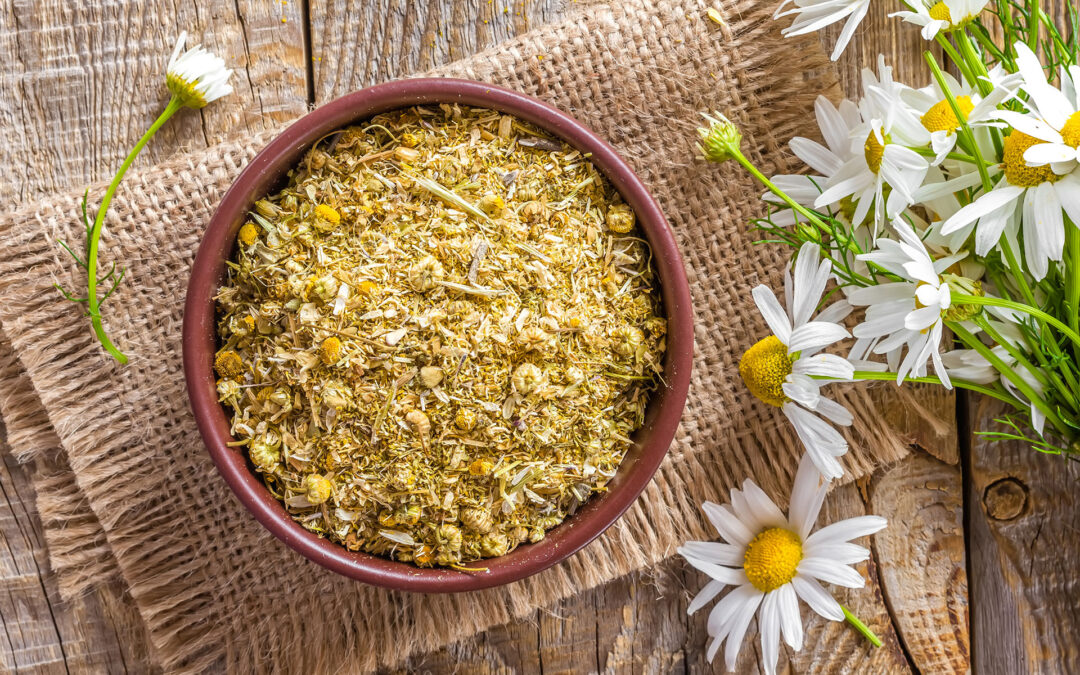
by Herb Exchange | Jul 8, 2021 | DIY Gardening, Flowers, Gardening, Growing |
Growing and harvesting medicinal flowers is one of life’s simple pleasures that can bring enormous joy and satisfaction. Herbs for medicinal use will grow almost anywhere. No matter what shape, size, or aspect your outdoor space has, it’s possible to successfully cultivate plants that may be used for medical purposes.
Read on to discover our top tips to ensure you obtain the very best quality harvesting results, as well as additional information for correctly harvesting a number of common medicinal herbs.
Before using any herb for medicinal purposes, we recommend consulting a suitable professional.
General Guidelines for Successful Harvesting
- Make sure that the herbs you’re harvesting have been grown in a suitable environment. Ideally, herbs should be grown organically, without the use of chemical fertilizers or pesticides. The soil, water, and air your plants use should be as fresh and natural as possible.
- Check that you have the correct species of herb. Some herbs have a common name that includes a number of different species. If in doubt, buy medicinal herb plants from a reputable source so that you know you’re cultivating the correct plant.
- Allow herbs to become well-established and strong before harvesting.
- Check that the plant is at the correct stage of its lifecycle for harvesting to take place. For example, if you intend to harvest flowers, the plant will need to have matured to the flowering stage of its lifecycle.
- If you are harvesting a perennial herb, harvest sustainably so that the plant has enough leaves or flowers to survive through to the next harvest season.
- When harvesting annuals, consider allowing some to self-seed. This will frequently result in a new crop next year, without the need for replanting.
- Although herbs can be picked at any time of the day, if you intend to dry, process, or store them, we recommend picking them early in the morning, once the dew has dried but before they face the full heat of the sun.
Chamomile
Possibly one of the more well-known herbs, many people enjoy chamomile flowers made into tea. Although both leaves and flowers are safe to eat, it’s the flowers that make the best tea.
To harvest chamomile, wait until the plant has plenty of flowers. Pick the flower heads early in the morning, ideally before the flowers have fully opened. Chamomile flowers can be used when freshly picked, or dried and stored for future use.
Chamomile is a perennial plant, so once established it should continue to provide flowers year after year. It’s a tricky plant to grow from seed, so we recommend that you buy chamomile plants to make life easier.
[wps_products collection="Chamomile Plants" items_per_row="4" title_color="#6BBEE7" show_featured_only="true"]
Calendula
If you are intending to use marigolds for medicinal or culinary use, make sure to use calendula officinalis, rather than related species – all marigolds are not the same!
The best time to pick calendula blooms depends on what you intend to use them for. If you want to use fresh flowers for a salad or tea, pick the fresh, new blooms. Flowers that are beginning to wilt or that have become over-blown are best left to fade completely, and the plants used for seed harvesting.
Calendula leaves can be added to salads – they have a distinctive taste that can add a kick to any salad plate.
This is an annual plant, so a fresh planting will be needed each year unless you leave a proportion of plants to self-seed.
[wps_products product_id="4317110763601" excludes="description" show_featured_only="true"]
Echinacea
Echinacea is a hardy herb that requires minimal care to grow successfully. As a perennial plant, once established it will grow year on year. Echinacea can be difficult to grow from seed. Luckily, you can buy medicinal herb plants like echinacea, which come pre-established.
The roots, leaves, and flowers of the echinacea plant can all be used for medicinal purposes. The type of harvesting will depend on which parts you wish to use. We recommend planting a few echinacea plants so that if you choose to use the roots of one or two, there will still be plenty left for later harvest.
[wps_products collection="Echinacea" items_per_row="4" title_color="#6BBEE7" show_featured_only="true"]
Nasturtiums
These hardy annuals provide a stunning splash of color for borders, hanging baskets, and container planting, as well as having a number of culinary uses. The leaves, seeds, and flowers are all edible.
Although flowers can be harvested separately, it’s usually easier to harvest the entire plant. Nasturtium seeds are a particularly tasty delicacy – leave the flowers to seed and then harvest once the seeds have formed. Patience is a virtue when it comes to nasturtium seeds – the bigger they are when picked, the tastier they are. Bigger seeds are also more likely to germinate, should you wish to harvest seeds to plant next year.
[wps_products product_id="4317114794065" excludes="description" show_featured_only="true"]
Garlic Chives
Garlic chives are a perennial that can be harvested at almost any time of the year. Garlic chive leaves are the part of the plant that’s used. These can be cut to within about an inch of the ground for culinary or medicinal use. In time, the leaves will regrow, providing a fresh crop.
Chives are best used fresh. Their long growing season means there’s less need to dry and store them in comparison with other herbs.
[wps_products product_id="4317111255121" excludes="description" show_featured_only="true"]
Yarrow
Yarrow flowers are commonly harvested for a range of purposes. Simply cut off the flowerheads when the flowers are fresh. Avoid over-blown or faded blooms. Yarrow is a perennial plant, so will grow from year to year provided its harvested sustainably.
Like many other perennial herbs, Yarrow doesn’t grow well from seed. We recommend buying established Yarrow plants to optimize the chances of a successful harvest.
[wps_products product_id="4317109846097" excludes="description" show_featured_only="true"]
Harvested correctly, medicinal herbs can provide a generous yield that can be used for a range of purposes. Well-established, healthy plants are going to give the best harvest, which is why we recommend buying medicinal herb plants.
Buying a healthy, established plant increases your chances of a successful harvest and removes the worry and uncertainty which can come from attempting to grow herbs from seed.

by Herb Exchange | Jul 24, 2019 | Flowers, Wildlife |
Humans are a fickle bunch, and try as I might, they are hard to figure. Say one thing, mean another. Say one thing, find out it wasn’t true. Commit to one thing, then change courses. Not saying I’m any different, but the dependability of nature (well maybe not weather) is something that brings me a lot of comfort. Cycles that repeat; you sort of come to depend on them. Geese come south, geese go north. Jenny wrens nesting in the same clay pots they used the year before. My mother in law’s daffodils emerging in late February, as they have been since she planted 30+ years ago. Even the sturgeon have decided the river is clean enough to make a comeback. We brought them to the brink of extinction, then we decided to bring them back. See what I mean? Fickle.
Well there is one cycle that is truly a wonder: the migration of the monarch. Their life cycle is equally awe inspiring but let’s focus on this trip! There are so many wondrous aspects of this flight, described as ‘epic’, so let’s start with this:
The monarch migration is the longest known insect migration on earth.
Chew on this: a monarch can leave Nova Scotia, Canada and travel to the mountains west of Mexico City, which works out to somewhere around 3,000 miles. A butterfly, mind you. Miracle? (more…)
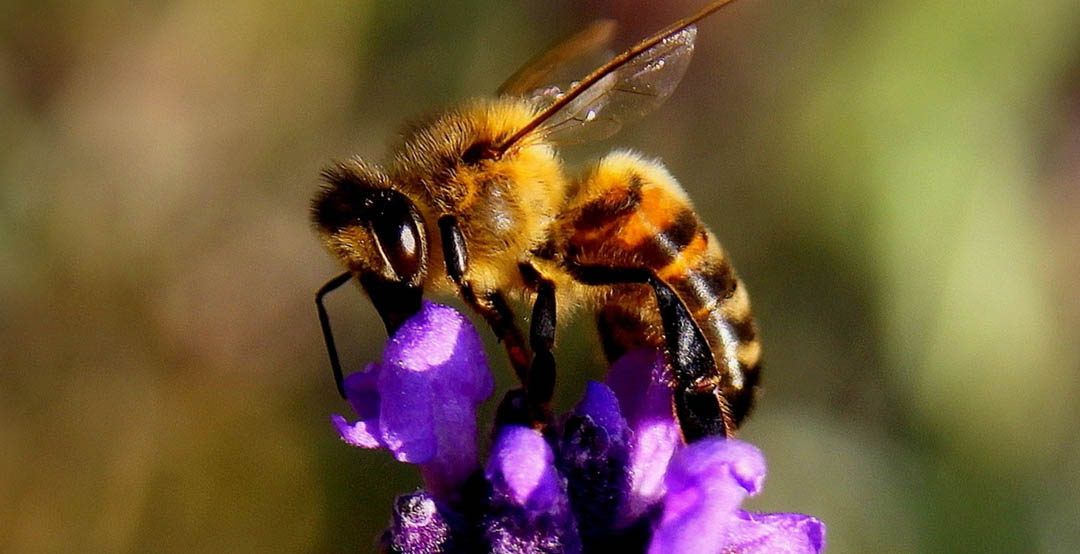
by Herb Exchange | Apr 3, 2019 | Basics, Flowers, Gardening, Wildlife |
No doubt, you are somewhat familiar with the plight of the pollinators. If you listen carefully, it feels as if so much of our natural world is facing a challenge, and it is, but there is something that all gardeners can do to help. Plant a garden packed with the right plants for these pollinators.
We are placing our focus on bees right now, as bees are the most critical pollinator we have. To refresh your memory, the issues facing bees are simple:
- Loss of flowering plants
- Loss of habitats
- Pests and diseases
- Climate change
We want to think that all of us can affect change, and make a difference, and in this case you can. If we focus on the loss of flowering plants, we can definitely be of service to bees in our world. If the problem is the loss of flower-rich habitats, the solution is to plant the best varieties of plants that provide both pollen and nectar. We grow herbs, and over 60 of our herbs are considered bee friendly. (more…)
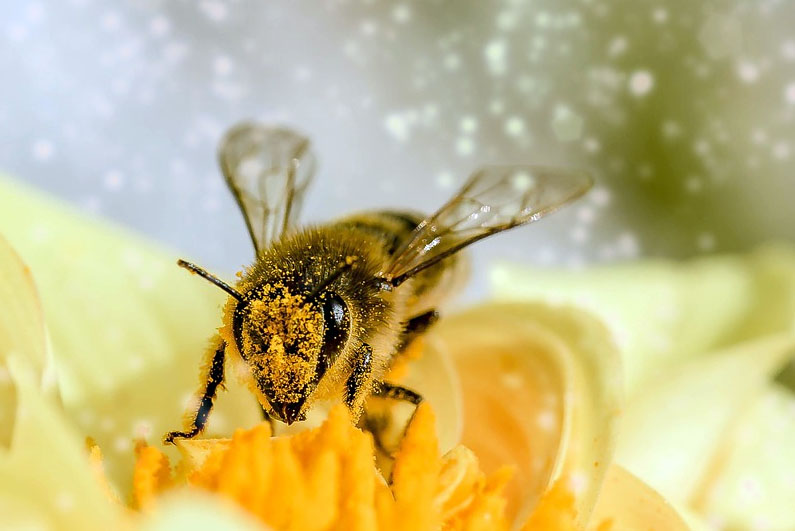
by Herb Exchange | Mar 28, 2019 | Flowers, Gardening, Pests and Problems |
Truth be told: I’m a huge fan of apocalyptic or dystopian fiction. Or, a fancier term, ‘speculative fiction’. Meaning the ‘what ifs’ in life; what if there was a pandemic, a nuclear explosion, or some cataclysmic event that creates a VERY challenging world for those left behind.
I’m no writer, but if I was, I think an interesting topic that could jump start one of these novels would be the elimination of pollinators from our natural world. Oh, wait. That is already happening. Let’s consider the bees. We, and I’m including myself in this collection, are terrible for bees. We’ve caused pollution, we’ve destroyed a lot of their habitat and the use of certain pesticides have threatened their existence. There is also the issue of a parasitic mite that is a huge contributor to their decline.
Bees. Did I mention that we can’t live without them?
(more…)
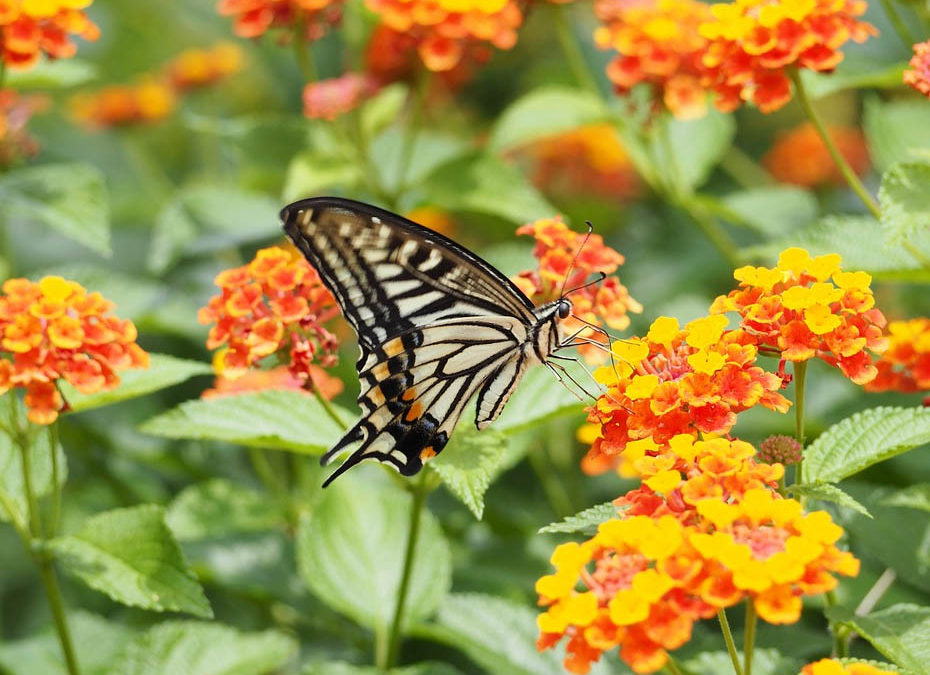
by Herb Exchange | Sep 5, 2018 | Basics, Flowers, Gardening |
The name of the large genus Lantana may be more commonly known to most people as verbena. The genus comprises more than 150 species, make it a versatile and plentiful group of plants to choose from when selecting perennials for a garden or landscape. In fact, there are so many varieties of verbena that is can be difficult to navigate the sea of colors, growth heights and blooming patterns of the group. Fortunately, we’ve captured all the basics here for you, so read on to learn more about this lovely and prolific genus.
Lantana Variations & Cultivars
Lantanas are available in a rainbow of colors, and more are being introduced all the time. Varieties may grow low to the ground as a plant or get a little taller like a shrub. Some of the common shades are red, white, blue, yellow, orange, and even blue, but many plants feature blooms that change hue as the season progresses. Let’s take a look at some of the most popular varieties and their characteristics:
- Lantana camara: Also known as Spanish Flag, this is the most widely available varieties of lantana, and there are many cultivars within this species such as Dallas Red and Irene. In fact, when a lantana plant is label simply as “Common Lantana,” it’s extremely likely it’s a camara cultivar.
- Lantana montevidensis: This variety often is referred to as trailing lantana or shrub verbena. It comes in many different colors and can bloom year-round in tropical climates. It’s often used ornamentally in flower gardens.
- Lantana depressa: The name says it all for this variation, which spreads like ground cover and features small, colorful blooms.
- Lantana strigose: Rough Shrubverbena earns its name from its “hairy” leaves. The blooms, however, are identical to those found on common lantana varieties.
- Lantana involucrate: This variety loves tropical areas and also may be called buttonsage or wild sage because of its fragrance.
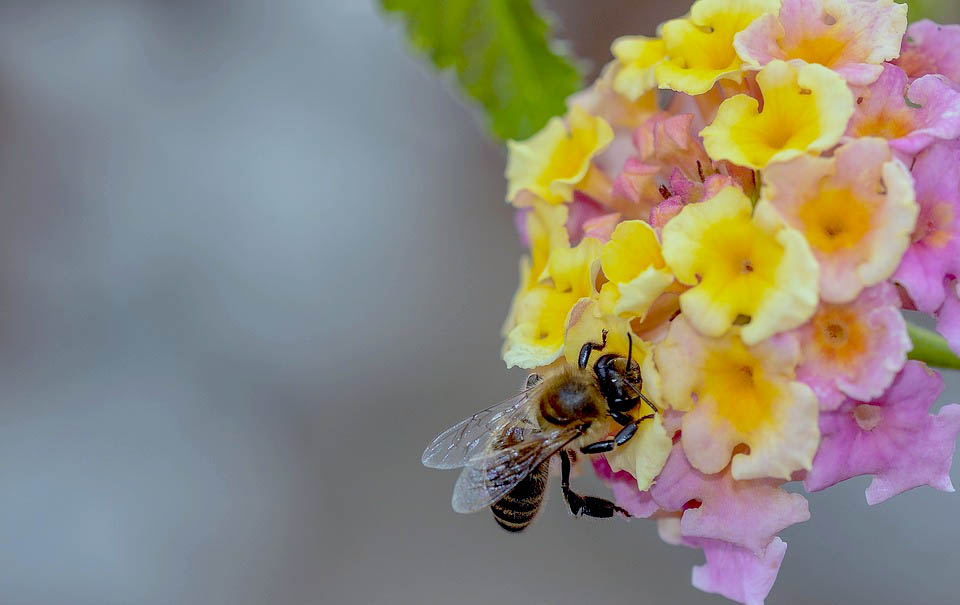
Tips on Planting Lantana
Lantana is widely considered a perennial in tropical regions of the globe, but it also grows fairly widely as an annual. Plants thrive in the southeast part of the United States but also can be found in Ecuador, Madagascar and the Galapagos Islands. They are so prolific in Australia that they are considered an invasive species and efforts are made to control their growth. If you are considering planting lantana in your garden or landscape, here are the guidelines to follow:
- Zones: In the United States, lantana does best in USDA Plant Hardiness Zones 7 and above. In the cooler regions, it is an annual; in warmer areas it can bloom all year. It also commonly is used as a houseplant thanks to its long blooming period and bright, cheerful colors. If the plant is in a pot on the patio during summer, it should be brought inside when temperatures drop to around 50 degrees.
- Sun exposure: Lantana like bright sunlight for at least six hours per day in order to maintain their profuse flowers. However, although you can grow them in full sun, they appreciate a bit of afternoon shade so try to plant them in places where they will get a few hours of part sun.
- Soil: Lantana grows best in moist, well-drained soil, that’s slightly acidic, but they can survive in drier conditions. Drainage is important as they don’t live as long with wet roots. Lantana thrive in pots but need some sort of moisture source. If you will using lantanas as houseplants, place the pot over a plate with water and rocks for moisture. They are quite easy to grow indoors as long as they have enough sunlight each day. Remember to rotate the planter weekly so they don’t start ‘leaning in’!
- Timing: Lantanas come into home and garden stores usually in the early spring before the bloom. Once they have flowered, the bloom should last at least into the early fall. In zones 7 and above, plant lantana in the fall and enjoy the colorful blooms late into the winter months. If you are using a variety that can survive in Zone 7, we recommend mulching heavily in case of a prolonged freeze.
- Landscaping: This is an extremely popular genus for landscape plants. You can plant the lower-growing versions along walkways, on ledges or near riverbanks. The trailing varieties in particular make ideal container plants, especially when combined with the bright green of sweet potato vine. The shrub varieties, which grow taller, can be used throughout a landscape design where foliage and prolific pops of bright color are needed. They fill a corner spot well but also get along with most other garden plantings. Some people even choose to create a lantana tree. This involves starting a shrub lantana variety in the spring and carefully pruning it as new growth appears. The stem should be supported with a bamboo stick until the plant is strong enough to stand on its own. With timely pruning and transplanting, a tree shape will appear, and the plant can bloom continuously if brought into the house starting in the fall.
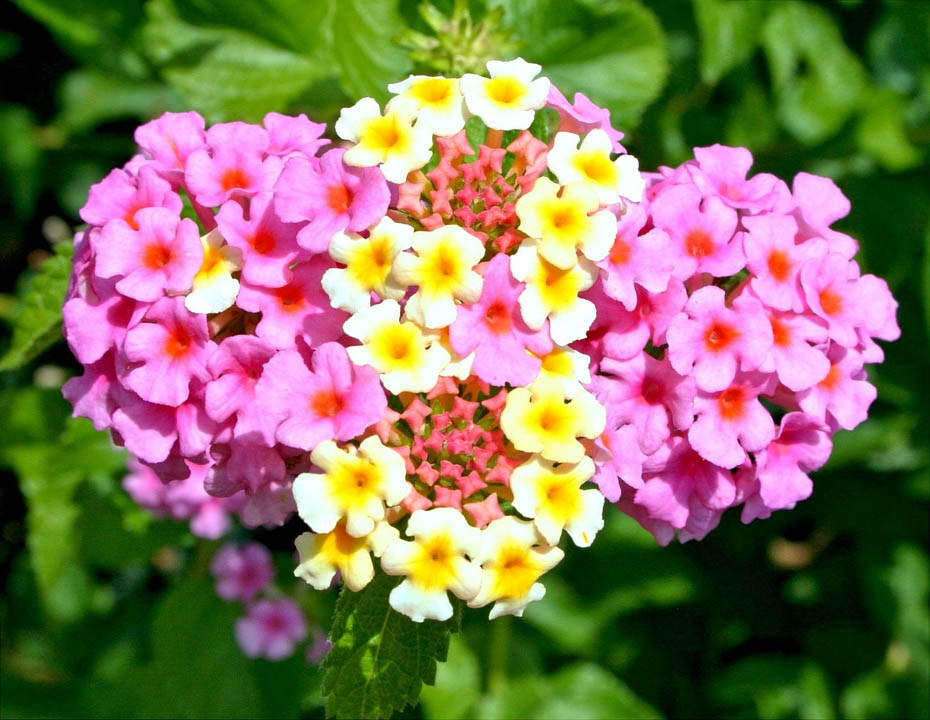
Care for Lantana Plants
Lantanas are not a fussy bunch, but they still have their needs and vulnerabilities. In the garden they require basic maintenance, and as a houseplant they need trimming and light in order to sustain their flowering habit. Here are some guidelines for how to keep your lantanas happy and healthy no matter where they are planted:
- Blooms: In tropical climates, lantanas can bloom nearly year-round. In the southern United States, they serve mostly as annuals, showing flowers from spring into fall. The range of colors lantanas may take is nearly unlimited. Red, orange, yellow, blue, and purple flowers are easy to come by. One of the most endearing traits of lantanas is that their blooms change color as the season progresses, so a yellow flower might eventually morph into an orange or reddish bloom, sometimes with more than one shade on a single petal. The cheerful colorations that lantanas offer is the chief reason it is so popular among gardeners across the United States.
- Leaves: The leaves of lantana species are fairly small and medium green with a serrated spear shape. Many varieties have a fuzzy hand feel (see strigose, above), but some are smooth. The leaves are one of the first indicators of poor plant health. Changes in coloration or spotting likely are signs of an infestation.
- Trimming: Lantanas respond will to trimming both indoors and out. Pruning of outdoor plants should take place in the spring. Gardeners may cut back about a third of the growth. Deadheading spent blooms can keep the plant looking attractive all season long, but it is not vital to its health. Indoor plants should be trimmed periodically to keep them at a size that’s appropriate for the indoors.
- Fertilizing: Although it is not crucial, some gardeners prefer to fertilize their lantana plants. Use a balanced fertilizer of about 10-10-10, and be careful not to overdo it. Too much fertilizer can burn and kill the plant.
- Disease: Though hardy, the lantana genus has its share of natural threats. Insects such as lace wings or white flies can attack the leaves, making them turn black. There some molds that might make their home in lantanas as well, including powdery mildew or sooty mold. These, along with the insect problems, may be treated with chemical sprays formulated for plants.
- Propagation: Stem cuttings are the easiest way to propagate lantanas, though some people use start them from seeds as well. To take grow a stem cutting, snip three inches of a nonflowering shoot and dip the ends into root hormone, carefully avoiding any low-growing leaves. Plant the cutting in a mix of perlite and peat moss and place the tray in a plastic bag situated next to a window that has filtered light (such as through a sheer curtain). After a few weeks, roots should have formed, and the plants may be removed from the bag and placed into larger individual pots.
- Berries: Lantanas produce berries that often are blamed for sickening people or animals that consume them. However, there are humans who routinely make pies out of the ripe berries or eat them while hiking if they find them along the trails. The general rule is to avoid unripe berries entirely and use caution if eating ripe versions.
- Attractants: Another lantana selling point is the fact that the plants attract butterflies to the garden in many parts of the United States. Hummingbirds, also, are frequent visitors to yards that have lantanas as part of the landscape. If you want to attract hummingbirds and butterflies near your home so you can observe them through your window, plant lantana varieties in hanging pots placed near the windows. Certain birds also like to harvest the bright flowers of lantana plants to decorate their nests and attract mates.
- Bees: Because honey bees create distinct varieties of honey depending on what types of plant from which they are gathering nectar, some people plant large swaths of lantanas to get lantana honey. This is mostly common in areas where large meadows of the plant grow freely.
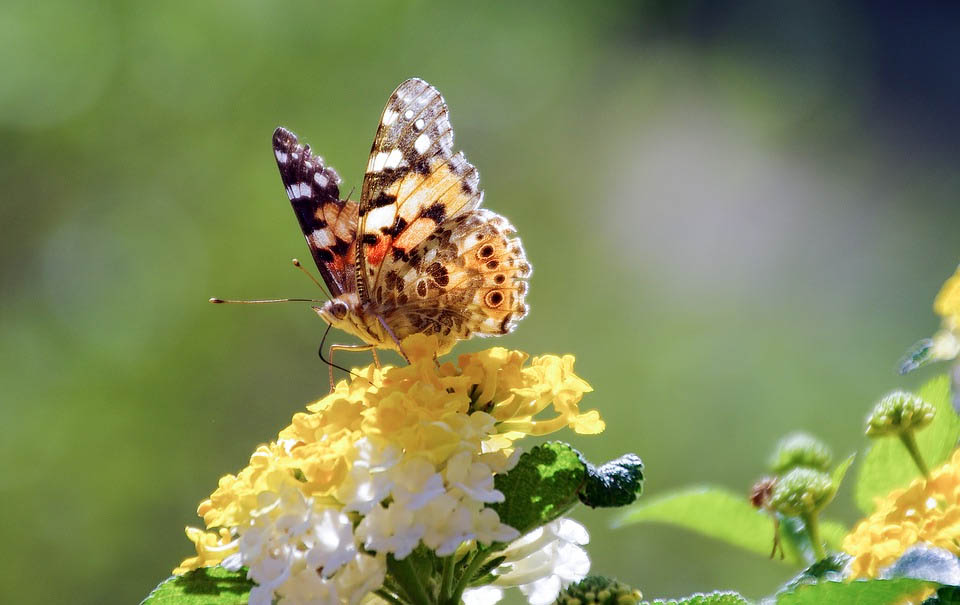
How to Use Lantata Plants?
Despite the plant’s reputation for being poisonous in some cases, there still are plenty of people who consume parts of the plant or use it for various other purposes. Here are some of the ways in which lantanas are used for more than just pretty garden plants.
- Wood: Tribal cultures in India use the wood stems of the plant to make furniture that resists rain, sun, and termites. For them it is readily available and much less costly than bamboo.
- Extracts: Distilled extracts made from the plant may be an effective insecticide for other plant species such as cabbage. There is a particular type of aphid that can be terminated using the extract.
- Oil from leaves: Commonly called “verbena” when used as a scent ingredient, the oil from lantana leaves is lightly citrusy and quite strong. Candles, body lotions, and room fresheners may include fragrance oil for lantana.
- Medicinal: By far the most popular and varied use the lantana plant aside from landscaping is its touted medicinal use. The oil may be used to treat skin rashes and sooth cuts, abrasions and stings. Some people allow the leaves to steep in a water bath, and soaking feet or elbows in the water may help alleviate the pain of rheumatism. Brewing the leaves into a tea is a traditional treatment across the globe to help with cold symptoms, headaches, fever, and indigestion. Other people inhale the steam from the hot tea to address respiratory ailments. Even the roots of the plant may be pressed into service. After they are dried, they are brewed and consumed to allegedly treat flu symptoms and cough.
- Repellant: The highly fragranced leaves often are dried and burned. The smoke is said to repel mosquitos and other pesky insects.
- Culinary: As mentioned above, it is not unheard of for people to harvest ripe berries from lantana species and use them in cooking. In Ecuador, residents make them into jams, pies, and beverages regularly. Still, the debate about their toxicity continues.
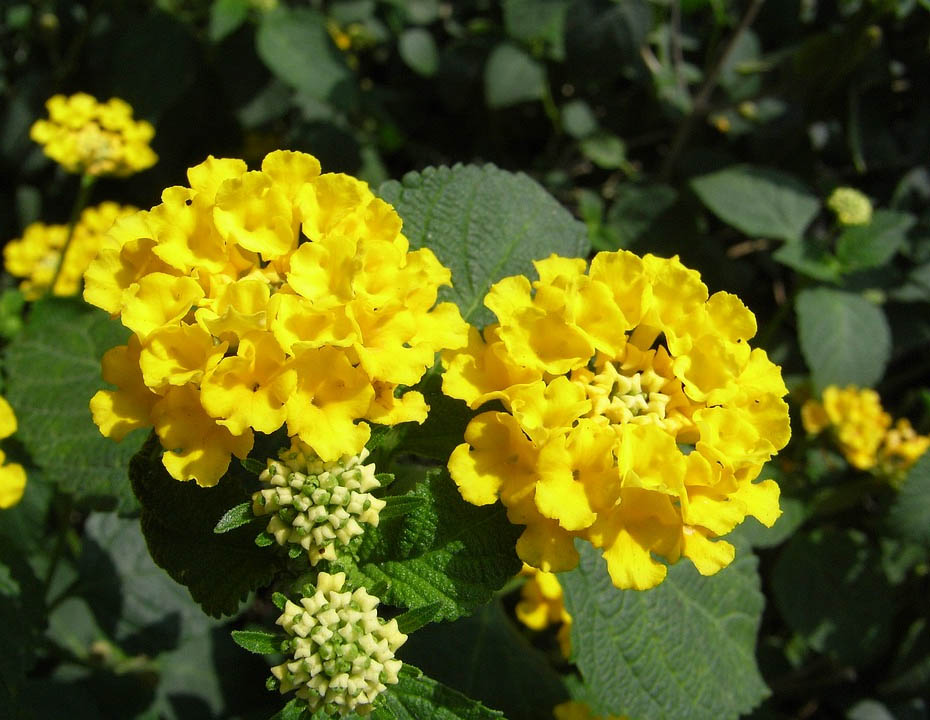
Final Thoughts
Clearly, the lantana genus contains a huge variety of species, preferences, and uses. In some countries, it is considered at best a weed and at worst an invasive species. But there are still more regions in which lantana is embraces as a beautiful and prolific blooming landscaping plant that no garden is complete without.
Gardeners enjoy lantana for its relative ease of growth and wide variety of blooming colors. Those who want to attract butterflies and hummingbirds to their garden spaces may plant lantanas throughout the landscape. The discussion about the toxicity of its leaves and young berries as they pertain to wild animals, pets, and humans continue to be debated, but in the ripe berries seem to relatively safe for consumption.
Truly the lantana is useful plant to have in your gardening repertoire, so don’t hesitate to consider it for your landscape, container or planting box. Bring a bit of cheerful color and butterfly beauty to your home.





